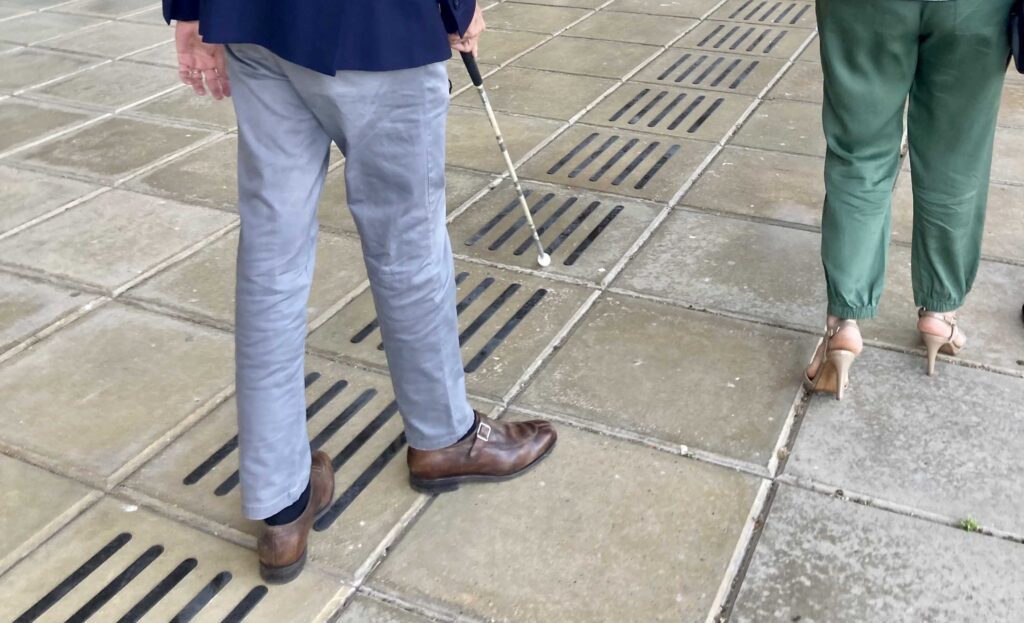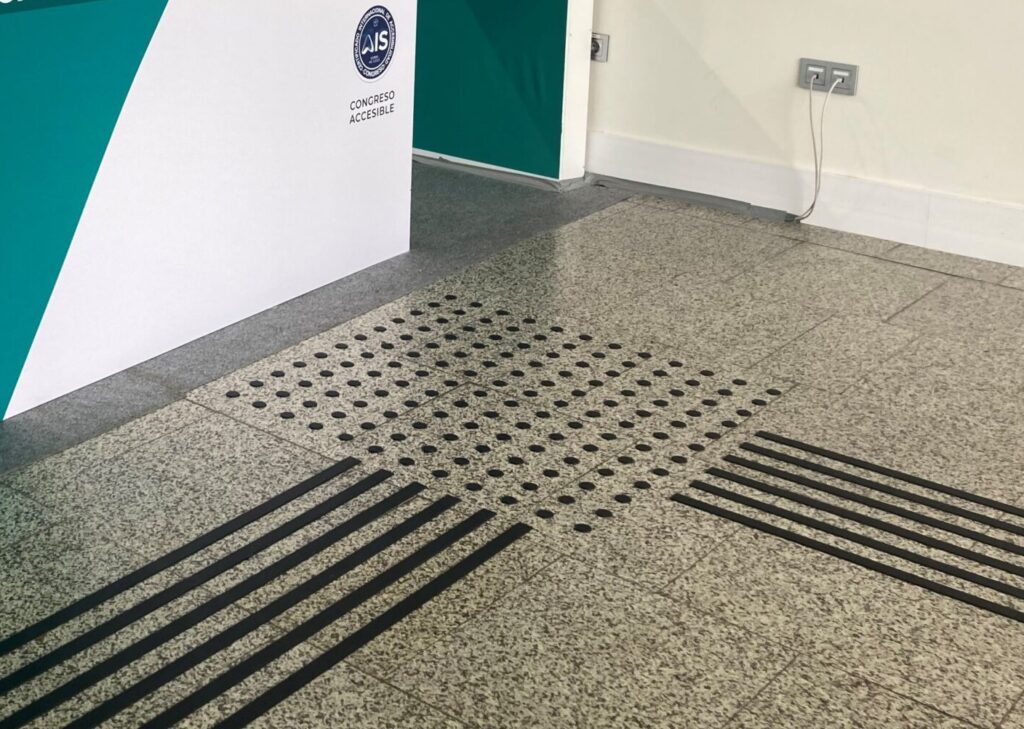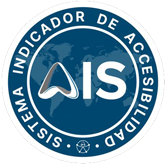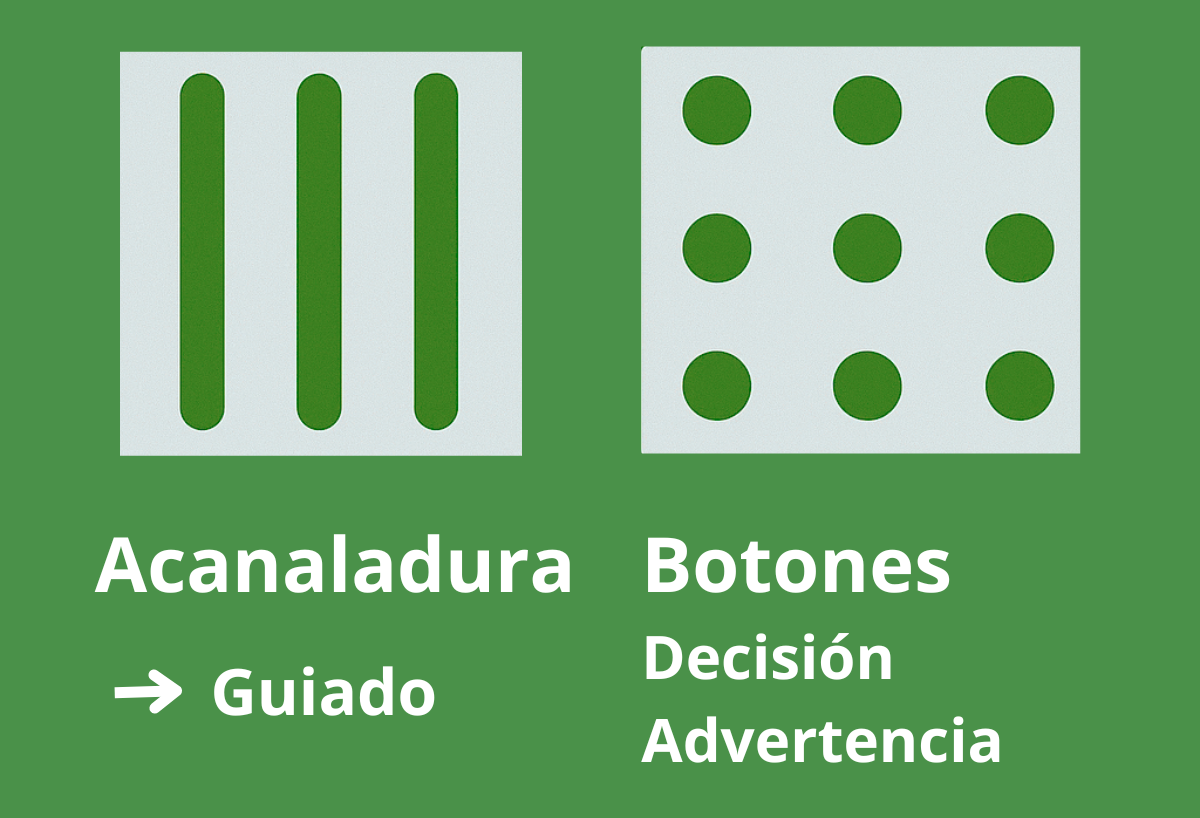Podotactile flooring is a signaling system installed on the floor to guide and orient people with visual impairment, through the sense of touch by means of the feet or the white cane. This guidance system is included in the assessment of physical spaces of the AIS certificate through 24 specific requirements on the subject of the AIS Standard 1/2023.
This system fulfills several essential functions such as enabling orientation, preventing risks, and promoting autonomy and inclusion:
- Orientation: Indicates safe and accessible routes for moving around outdoors or indoors.
- Risk prevention: Warning of obstacles, unevenness or hazards (stairs, crossings, curbs).
- Autonomy and inclusion: Allows visually impaired people to move around more independently; promoting safer and more comfortable environments for all people.
How many types of tactile flooring are there?
There are two main types of tactile footwear, easily recognizable both by touch and sight:
1. Grooving (Directional or routing pavement)
They are longitudinal bands in relief that guide the person with a cane, indicating the way to follow. They can be found in corridors, platforms, sidewalks, squares…
The user can follow the bands with the cane or with the feet, keeping oriented in a straight line.

2. Buttons (warning or stop pavement)
Buttons are raised dots regularly arranged to alert or warn of a possible danger or a change of direction. They are usually installed on pedestrian fords, traffic islands, at the end of a guided route, on station platforms. It must also be installed on stairs and ramps (except in Spain, where legislation requires the use of grooves).

This type of pavement indicates to the visually impaired person that he or she should stop, pay attention, or that a decision is approaching, such as a turn, crossing, or entrance.
How is a tactile floor covering installed?
In its installation it is necessary to take into account the material it is made of, the placement, the visual and tactile contrast, and whether it complies with the regulations.
However, the correct implementation of the tactile-foot routing is not only a technical or aesthetic issue: it is a concrete way of respecting the rights of accessibility, autonomy and safety of people with disabilities.
AIS requirements for tactile flooring
The AIS accessibility certificate, in its international standard for the built environment, has a total of 24 requirements that verify the characteristics, installation and use of tactile flooring on exterior and interior horizontal routes, ramps, elevators and stairs.
More information
- Accessibility audit: what is it and what does it involve?
- Find more information about tactile flooring on the website of our Authorized Implaser.

